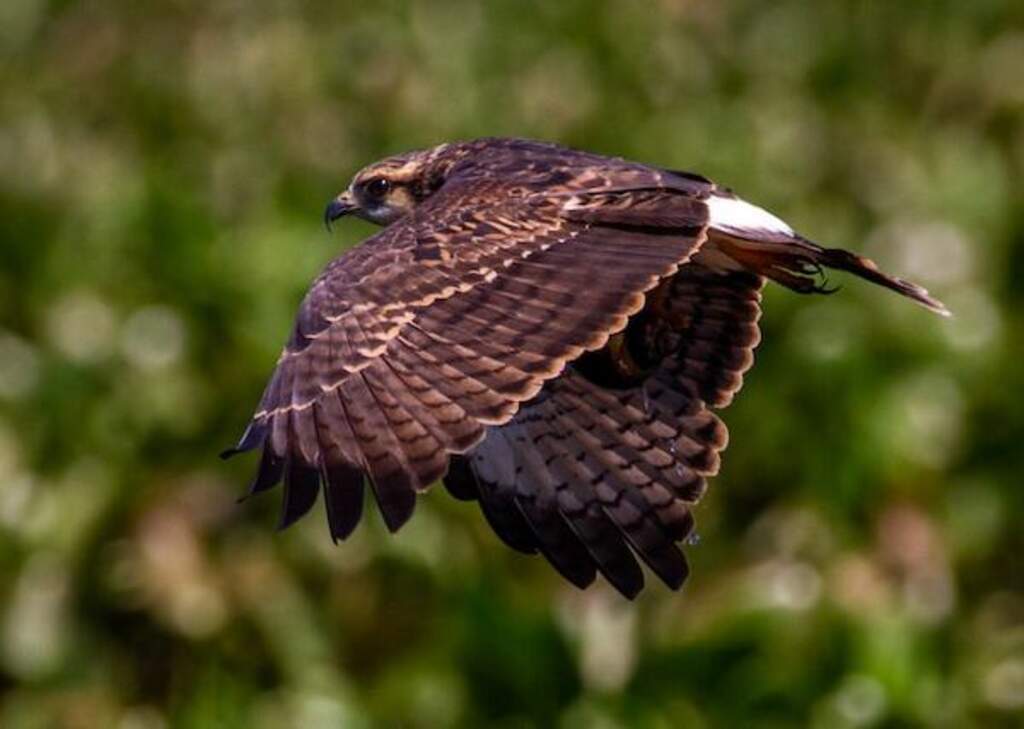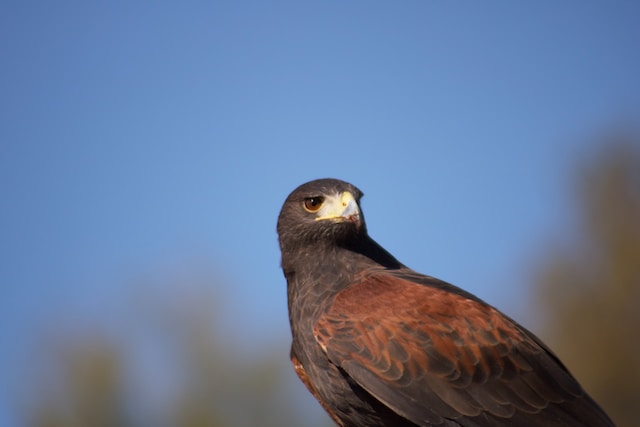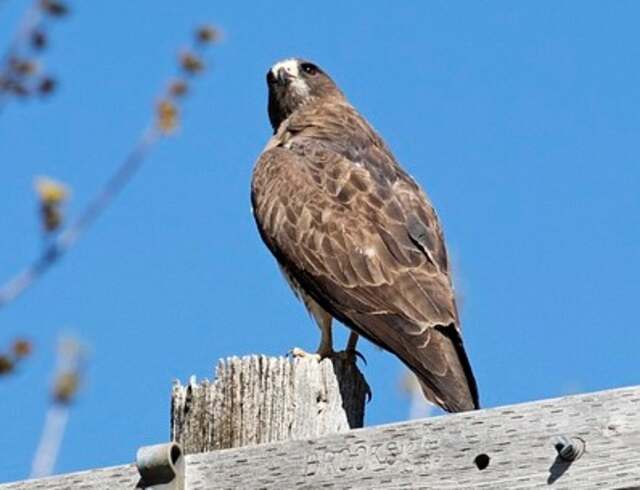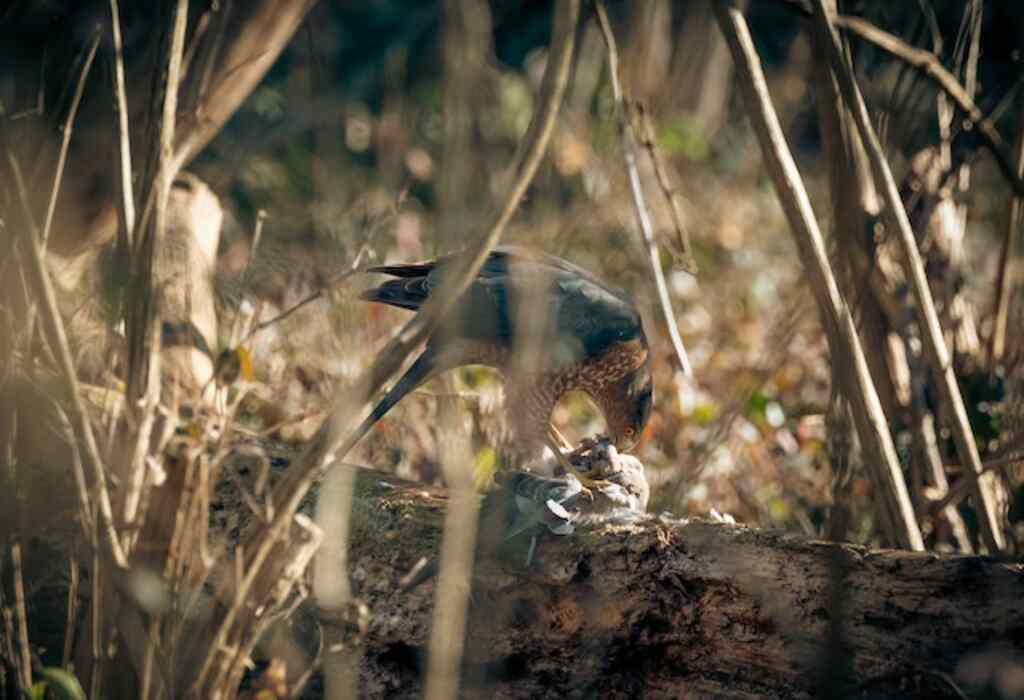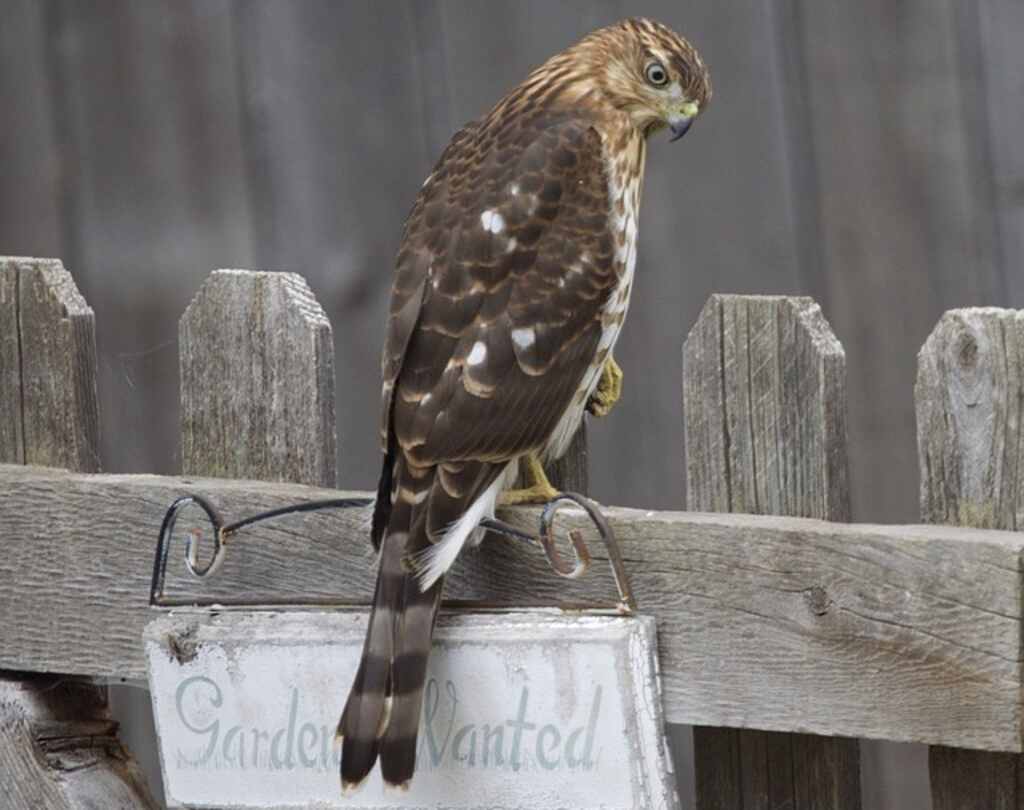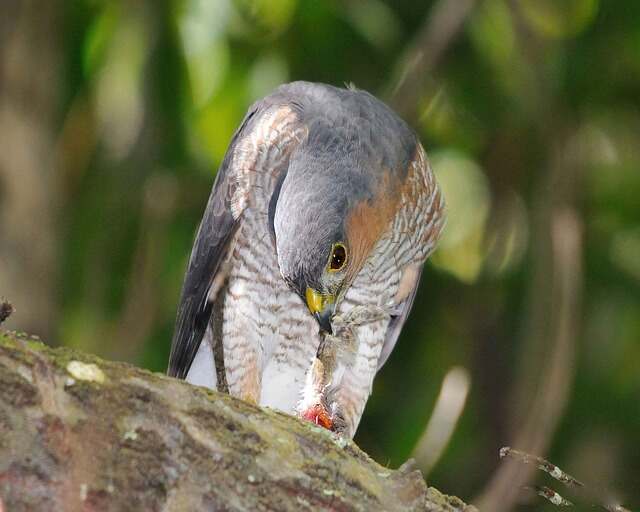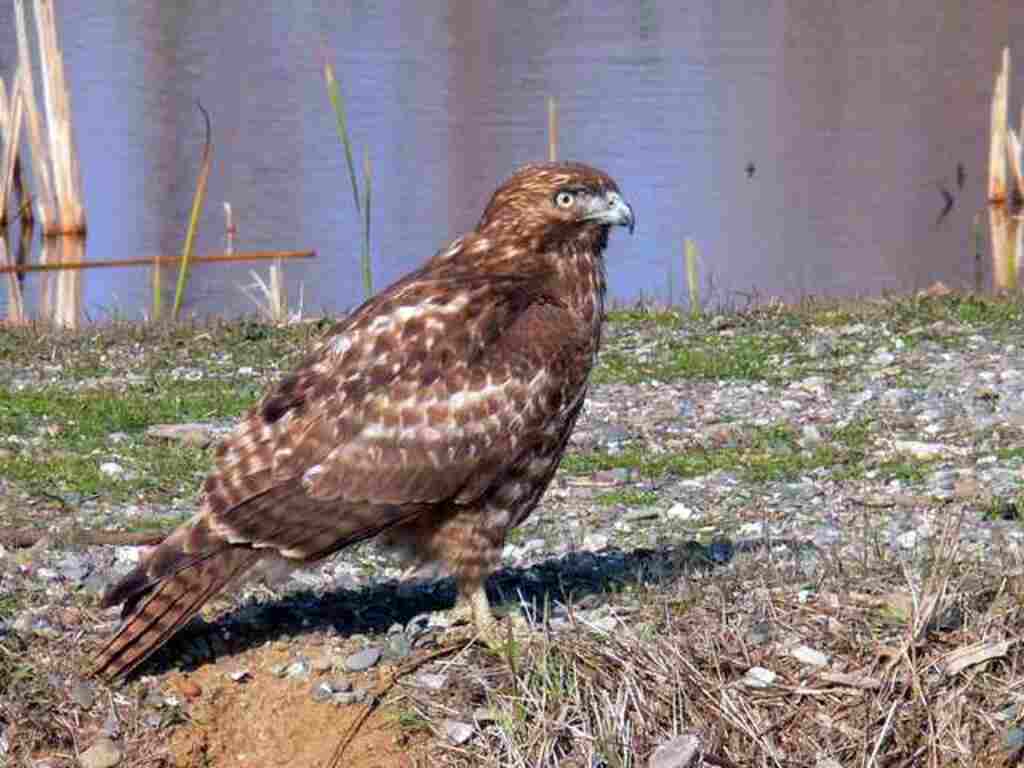“Do Hawks Attack Ducks?” Ever wondered if these airborne predators see a duck-shaped dinner floating below?
Brace yourself for a quacktastic adventure as we unravel the truth! According to the Cornell Lab of Ornithology, hawks are known to target ducks, particularly the weak or injured ones.
Ducks even form a significant portion of the diet for hawk species like the Cooper’s hawk and the sharp-shinned hawk.
Join us on this thrilling feathered quest as we delve into the fascinating dynamics between hawks and ducks, exploring predation habits, defense mechanisms, and their wild coexistence.
Get ready for surprising tales, valuable insights, and a webbed-footed showdown like no other!
Table of Contents
- 1 Key Takeaways
- 2 Do Hawks Attack Ducks?
- 3 Hawk Predation Habits
- 4 Duck Defense Mechanisms
- 5 Hawk and Duck Interactions in the Wild
- 6 Hawk and Duck Coexistence
- 7 Hawk and Duck Conservation Efforts
- 8 The Ethics of Hawk and Duck Interactions
- 9 Domesticated Ducks and Hawk Attacks
- 10 Misconceptions about Hawk and Duck Interactions
- 11 Frequently Asked Questions
- 12 Conclusion
- 13 Author
Key Takeaways
- Hawks are known for their hunting skills and use their sharp talons and keen eyesight to capture prey, including ducks.
- Ducks have adapted various strategies such as swimming in groups, flying erratically, and using camouflage to protect themselves from hawk attacks.
- Habitat fragmentation, food availability, and population density can influence the likelihood of hawk attacks on ducks.
- Conservation efforts aim to strike a balance between the needs of both hawk and duck populations and promote their long-term coexistence.
Do Hawks Attack Ducks?
Yes, hawks are known to attack ducks. Hawks are skilled predators, and ducks make for potential prey due to their size and vulnerability.
Hawks often target smaller and weaker ducks, utilizing their aerial agility and powerful talons to catch them.
However, not all hawks specialize in hunting ducks, as their choice of prey can vary based on habitat and available food sources.
Hawk Predation Habits
The predation habits of hawks have been extensively studied, revealing that they do indeed attack ducks as part of their diet.
Hawks are known for their hunting techniques, which involve using their sharp talons and beak to capture prey in midair or on the ground.
These birds of prey have an acute sense of vision, which helps them spot small animals from a great distance.
Ducks, on the other hand, have developed behavioral adaptations to avoid being preyed upon by hawks.
For instance, they tend to swim in groups and stay close to cover, such as reeds or trees, to reduce their chances of being spotted by a hawk.
However, despite these defense mechanisms, hawks are still able to catch ducks. This highlights the importance of understanding the dynamics between predator and prey in natural ecosystems.
In the subsequent section, we will explore the various defense mechanisms that ducks have developed to protect themselves from hawk attacks.
Duck Defense Mechanisms
Ducks have developed several defense mechanisms to evade predators such as hawks.
Flight is the most common defense mechanism used by ducks. They are excellent fliers and can escape from predators by taking off quickly and flying away.
However, ducks also use group defense and camouflage to protect themselves from predators.
Their collective behavior and blending into the environment help ducks to avoid being singled out by predators.
Flight
During flight, hawks use their keen eyesight to spot potential prey from high altitudes. They are known for their incredible aerial prowess, which is essential for their survival as carnivorous predators.
Hawks are particularly skilled at hunting smaller birds, such as ducks, and will often swoop down from above to capture their prey.
However, ducks have evolved various defense mechanisms to evade hawks during flight.
Some species of ducks have adapted their flight patterns to be erratic and unpredictable, making it difficult for hawks to track them.
Others fly in large flocks, which creates confusion and makes it harder for hawks to single out an individual target.
Additionally, some ducks will remain close to water sources where they can quickly dive into the water for cover if a hawk approaches.
These behaviors and strategies demonstrate the complex and dynamic nature of bird behavior and migration patterns.
While these defense mechanisms can be effective, they are not foolproof, and some ducks will inevitably fall prey to hawks.
However, by working together in groups and utilizing their collective intelligence, ducks can increase their chances of survival and protect themselves from these aerial predators.
Group Defense
Group defense is a vital survival strategy utilized by various bird species to increase their chances of evading predators.
Birds that travel in flocks are able to communicate with one another, providing an early warning system when a potential predator is detected.
This allows the group to collectively respond and take evasive action.
There are several techniques that birds use to avoid predators while in a group, including flocking, where birds fly closely together in a coordinated manner, making it difficult for predators to target a single bird.
Additionally, birds will sometimes mob predators, where they swarm and harass the predator, making it difficult for it to focus on a single bird.
Birds may also use a distraction display, where they fake injury to draw a predator away from the rest of the group.
Overall, group defense is an effective way for birds to avoid predators and increase their chances of survival. Moving forward, another important survival strategy for birds is camouflage.
Camouflage
Like a chameleon blending into its surroundings, many bird species have evolved to use camouflage as a survival strategy against predators.
Camouflage tips include blending in with the coloration of the environment, breaking up body shape, and minimizing movement.
Some birds take this strategy to the next level by changing their coloration seasonally.
For example, the ptarmigan, a member of the grouse family, changes from brown to white in the winter, allowing it to blend in with the snow and avoid predation.
The survival strategies of birds extend beyond just visual camouflage, as some species also use auditory camouflage to avoid detection.
This involves altering their vocalizations to blend in with background noise, making it more difficult for predators to locate them.
Understanding these survival strategies is crucial for both bird enthusiasts and predators alike.
In the subsequent section about hawk and duck interactions in the wild, we will explore how these strategies play out in real-life scenarios.
Hawk and Duck Interactions in the Wild
The interactions between hawks and ducks in the wild have been a subject of interest for researchers for years.
Through observations and studies, researchers have gained insights into the dynamics of these interactions and the strategies used by both hawks and ducks.
Real-life examples of hawk and duck interactions in the wild can provide further evidence of these dynamics and help us better understand the ecological roles of these birds.
Observations from Researchers
Researchers have observed that hawks have been known to prey on ducks in certain circumstances.
Research findings suggest that predator-prey dynamics between these two species can be influenced by various factors, such as the size and behavior of the ducks, the habitat they occupy, and the presence of other predators.
For instance, hawks tend to target smaller ducks that are easier to catch, and they may also rely on surprise attacks to overcome their prey’s defenses.
Moreover, ducks that inhabit open areas, such as wetlands or lakes, are more vulnerable to hawk attacks than those that are found in dense vegetation, where they can hide from their predators.
Nevertheless, real-life examples have shown that ducks can also evade hawks by using their speed, agility, and social behavior, such as flocking and alerting each other of potential threats.
Real-Life Examples
Previous research has shown that hawks do indeed attack ducks, but the extent to which this occurs in real-life situations is less clear.
To gain a better understanding of the ecological impacts of hawk-duck interactions, case studies have been conducted in various ecosystems.
These studies have revealed that while hawks do occasionally prey on ducks, the relationship between these two species is more complex than previously thought.
Factors such as habitat fragmentation, food availability, and population density can all influence the likelihood of hawk attacks on ducks.
These case studies provide valuable insight into the dynamics of predator-prey relationships in natural systems.
Moving forward, it will be important to continue studying the coexistence of hawks and ducks in order to better understand the broader ecological implications of their interactions.
Hawk and Duck Coexistence
Interestingly, the idea of peaceful coexistence between hawks and ducks seems to be more of a utopian fantasy than a realistic possibility.
While there are some coexistence strategies that have been proposed, such as providing artificial nesting sites for ducks and habitat management to reduce competition between the two species, the ecological impact of hawks on duck populations remains a concern.
Hawks are natural predators and will often attack ducks, especially during the breeding season when they are more vulnerable.
Additionally, hawks may also compete with ducks for resources such as food and nesting sites.
Despite these challenges, there are ongoing efforts to conserve both hawk and duck populations, such as through habitat restoration and predator control programs.
These conservation efforts aim to strike a balance between the needs of both species and promote their long-term coexistence.
Hawk and Duck Conservation Efforts
While coexistence between hawks and ducks can be challenging, conservation efforts are being made to protect both species.
One such effort is habitat preservation, which involves creating and maintaining suitable environments for both hawks and ducks to thrive.
This can include protecting wetlands and other natural habitats that provide food and shelter for ducks, while also ensuring that hawks have access to suitable hunting areas.
Another conservation effort involves monitoring and managing hawk populations, particularly in areas where they may pose a threat to duck populations.
By carefully managing hawk populations and promoting coexistence between the two species, conservationists hope to ensure the long-term survival of both hawks and ducks.
Moving forward, it is important to consider the ethics of hawk and duck interactions, as this will be crucial in determining the best ways to promote coexistence and ensure the sustainability of these two important species.
The Ethics of Hawk and Duck Interactions
The ethics of hawk and duck interactions involve complex considerations regarding human intervention and moral responsibility.
On one hand, human intervention can be justified in protecting endangered duck species from hawk attacks.
On the other hand, it raises questions about the extent of our moral responsibility towards the natural world and the potential consequences of our actions.
It is important to explore these issues in a scientific and evidence-based manner to inform ethical and conservation decisions.
Human Intervention
Human intervention has been known to significantly impact the likelihood of hawks attacking ducks.
Anthropogenic factors such as habitat loss, climate change, and pollution have disrupted the natural balance of ecosystems, leading to changes in the behavior and distribution of predator and prey species.
For example, urbanization has created environments that are more favorable for hawks, as buildings and other structures provide nesting sites and perches.
Additionally, humans often provide food sources for both hawks and ducks, which can alter their normal hunting and foraging patterns.
A study conducted in Vancouver, Canada found that hawks were more likely to prey on ducks in urban areas compared to rural areas, suggesting that human activities may be a contributing factor.
Although humans have a moral responsibility to minimize their impact on wildlife, it is important to recognize that our actions can have unintended consequences on the natural world.
Moral Responsibility
As individuals living within complex ecosystems, it is incumbent upon us to recognize the ethical considerations and societal implications of our actions towards the natural world.
Our choices can have far-reaching consequences, particularly when it comes to the delicate balance of predator and prey relationships.
For example, human intervention in duck habitats could lead to increased hawk attacks on these waterfowl.
This highlights the importance of understanding the moral responsibility we hold in preserving and protecting the natural world.
To truly live in harmony with nature, we must take steps towards minimizing our impact and safeguarding the ecosystems we inhabit.
Only by doing so can we ensure that we do not disrupt the delicate balance of life. In the subsequent section about domesticated ducks and hawk attacks, we will explore how these principles apply to specific cases.
Domesticated Ducks and Hawk Attacks
Domesticated ducks are vulnerable to attacks from predators, including hawks. These attacks can result in injury or death of the ducks, causing significant financial loss for farmers and pet owners.
Various prevention methods, such as providing cover and fencing, can be implemented to reduce the risk of hawk attacks on domesticated ducks.
Vulnerability to Predators
One factor that plays a crucial role in the vulnerability of ducks to predators is their natural behavior patterns. Ducks are generally social creatures that live in groups and are active during the day.
This makes them easily detectable by predators such as hawks and eagles, which are known to hunt during the day.
Additionally, ducks are aquatic birds that are often found in or near bodies of water, which makes them vulnerable to predators that can swim or wade in water.
Environmental factors such as the availability of suitable habitats and food sources also contribute to the vulnerability of ducks.
Human impact, such as the destruction of natural habitats and pollution, can further exacerbate the vulnerability of ducks to predators.
To illustrate the vulnerability of ducks to predators, the following table shows the natural behavior patterns of ducks and common predators that prey on them:
| Natural Behavior Patterns of Ducks | Common Predators |
|---|---|
| Active during the day | Hawks |
| Live in groups | Eagles |
| Aquatic birds | Foxes |
| Found in or near water | Snakes |
| Feed on plants and insects | Raccoons |
Prevention methods can help reduce the vulnerability of ducks to predators, such as providing suitable habitats and minimizing human impact on natural environments.
Prevention Methods
In order to prevent attacks on ducks by hawks, habitat modification is a key prevention method. This can include creating areas of dense vegetation for ducks to hide in, or building structures that provide cover and shelter.
Additionally, removing attractants such as open water sources or food can reduce the likelihood of hawks hunting in the area.
It is important to note that while these methods can be effective in reducing attacks, they are not foolproof.
Hawks are skilled hunters and will still attempt to prey on ducks if they are able to. However, implementing prevention measures can help to minimize these interactions and protect vulnerable duck populations.
Moving forward, it is important to dispel misconceptions about hawk and duck interactions in order to promote a better understanding of these species and how they interact in the natural world.
Misconceptions about Hawk and Duck Interactions
Despite common misconceptions perpetuated by media portrayal, hawks do not typically attack ducks. Hawks primarily hunt small mammals and birds of similar size, and ducks are not typically within their prey range.
While there may be occasional instances of hawk attacks on ducks, these are rare and not the norm.
It is important to understand the natural behaviors and tendencies of different species in order to minimize conflicts and ensure peaceful coexistence.
With this in mind, the question remains: do hawks attack ducks? Let’s explore this further in the subsequent section.
Frequently Asked Questions
What is the average lifespan of a hawk?
Satire aside, the average lifespan of a hawk varies depending on the species, but ranges from 5-20 years. Diet and habitat play a crucial role in the lifespan of a hawk, with habitat loss and prey availability affecting longevity.
How do ducks communicate with each other?
Ducks communicate with each other through a variety of vocalizations and body language, including calls, whistles, and wing flapping. They use these signals to convey information about food, danger, and other important factors in their environment.
What is the migration pattern of hawks?
The migration pattern of hawks is tracked by conservation efforts. Research indicates that hawks follow specific routes and timings during their migration, which are influenced by factors such as weather, prey availability, and breeding seasons.
Are there any laws protecting ducks from hawk attacks?
Legal implications of protecting ducks from hawk attacks depend on predator-prey relationships and conservation laws. Scientific evidence shows that hawks do prey on ducks, but balancing conservation efforts and natural predation is necessary for ecosystem health.
How do ducks adapt to living in urban areas?
Ducks have adapted to living in urban areas by altering their behavior. They exhibit less fear towards humans, adapt to new food sources, and nest in alternative locations. This urban adaptation involves changes in their social behavior and ecology.
Conclusion
In conclusion, the question of whether hawks attack ducks can be answered with a resounding yes. Hawks are natural predators and have developed specialized hunting techniques that allow them to capture their prey, including ducks.
However, ducks are not defenseless and have evolved various defense mechanisms to escape their predators, including diving underwater or flying away.
In the wild, hawks and ducks often interact in a complex relationship of predator and prey.
While hawks may pose a threat to ducks, they also play an important role in maintaining the balance of their ecosystem.
It is important for humans to understand and respect this delicate balance and to implement conservation efforts to protect both hawk and duck populations.
Despite the potential dangers of hawk and duck interactions, coexistence is possible. With proper management and conservation efforts, humans can create spaces where both species can thrive.
It is important to recognize the significance of these interactions and to approach them with a scientific, evidence-based perspective.
By doing so, we can ensure the continued existence of these magnificent creatures and the ecosystems they inhabit.

